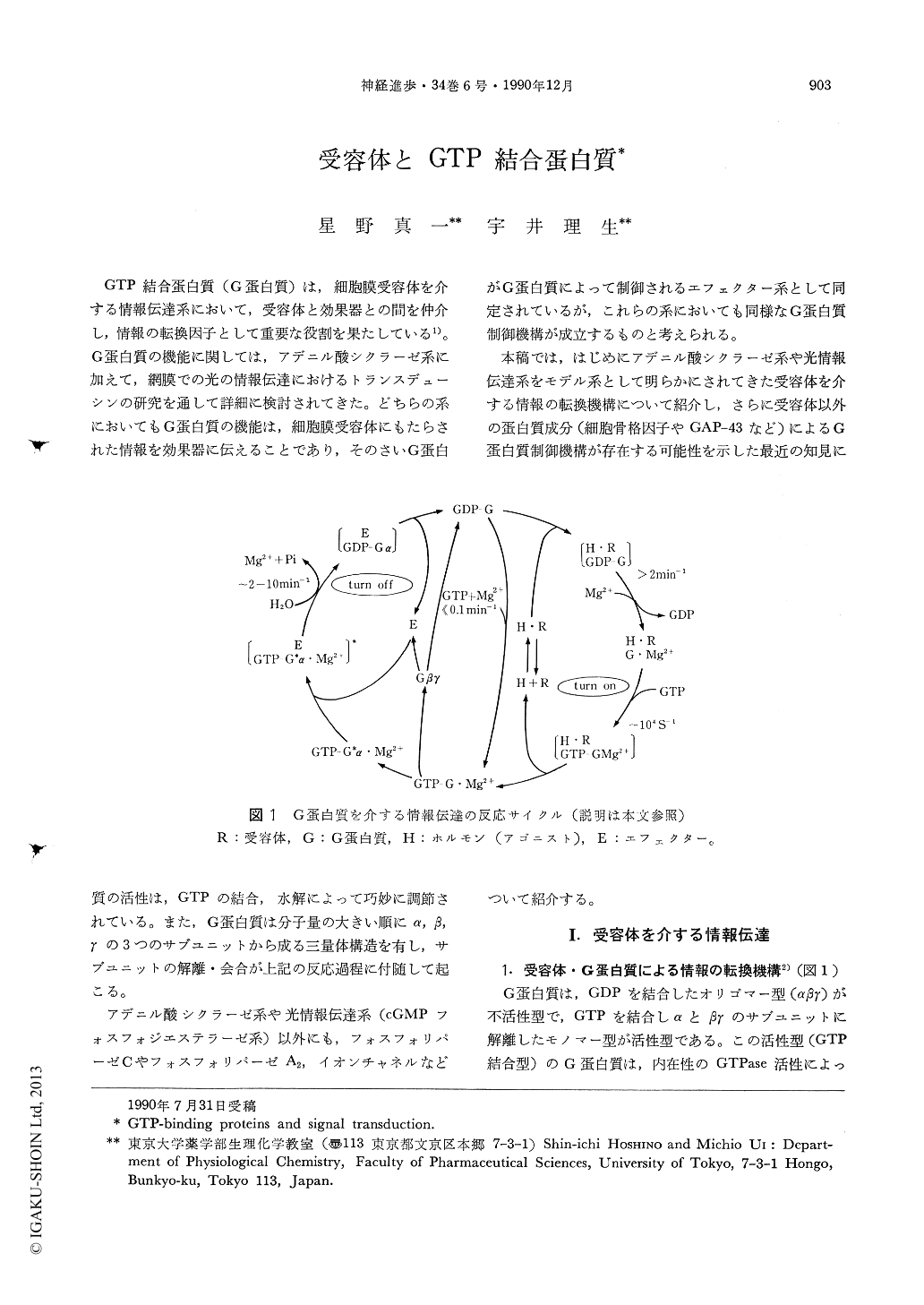Japanese
English
- 有料閲覧
- Abstract 文献概要
- 1ページ目 Look Inside
GTP結合蛋白質(G蛋白質)は,細胞膜受容体を介する情報伝達系において,受容体と効果器との間を仲介し,情報の転換因子として重要な役割を果たしている1)。G蛋白質の機能に関しては,アデニル酸シクラーゼ系に加えて,網膜での光の情報伝達におけるトランスデューシンの研究を通して詳細に検討されてきた。どちらの系においてもG蛋白質の機能は,細胞膜受容体にもたらされた情報を効果器に伝えることであり,そのさいG蛋白質の活性は,GTPの結合,水解によって巧妙に調節されている。また,G蛋白質は分子量の大きい順にα,β,γの3つのサブユニットから成る三量体構造を有し,サブユニットの解離・会合が上記の反応過程に付随して起こる。
アデニル酸シクラーゼ系や光情報伝達系(cGMPフォスフォジエステラーゼ系)以外にも,フォスフォリパーゼCやフォスフォリパーゼA2,イオンチャネルなどがG蛋白質によって制御されるエフェクター系として同定されているが,これらの系においても同様なG蛋白質制御機構が成立するものと考えられる。
GTP-binding proteins are a family of membrane-bound guanine nucleotide-binding proteins which play key roles in transduction of extracellular signals given to cell surface receptors to membrane effectors producing intracellular signals. The mechanism of signal transduction by the proteins in best characterized in the adenylate cyclase system and for transducin, the G protein in retina. Recent progress in molecular characterization of G proteins revealed occurence of at least 9 distinct entities of molecule in mammals. Since most of the mammalian cells contain multiple G proteins with structural similarities, a current problem is to explain how specificity is achieved among the different proteins.

Copyright © 1990, Igaku-Shoin Ltd. All rights reserved.


